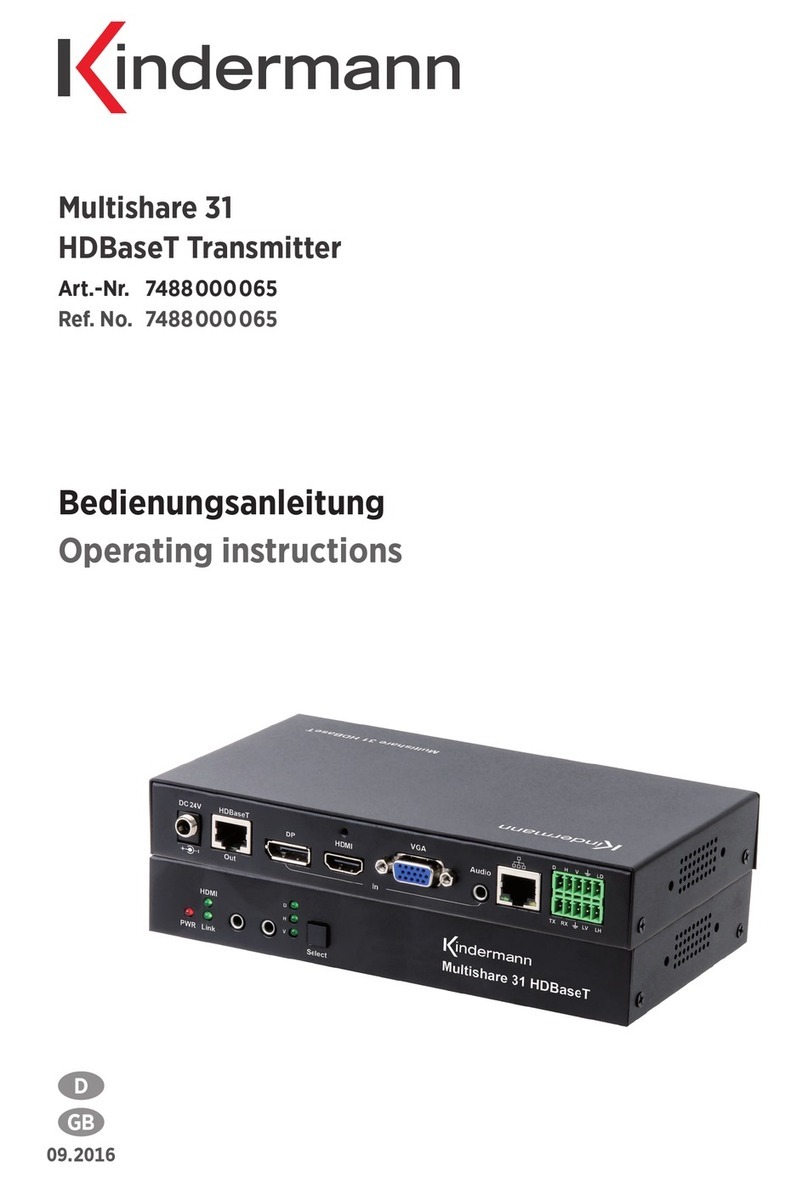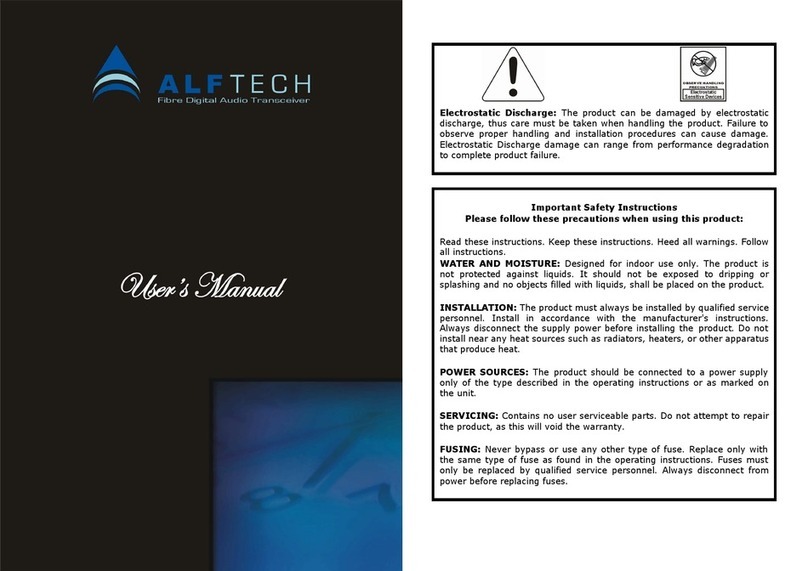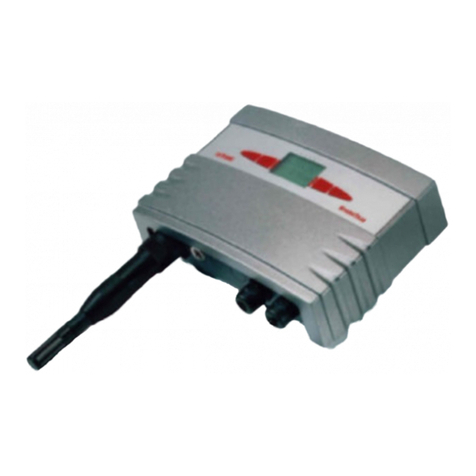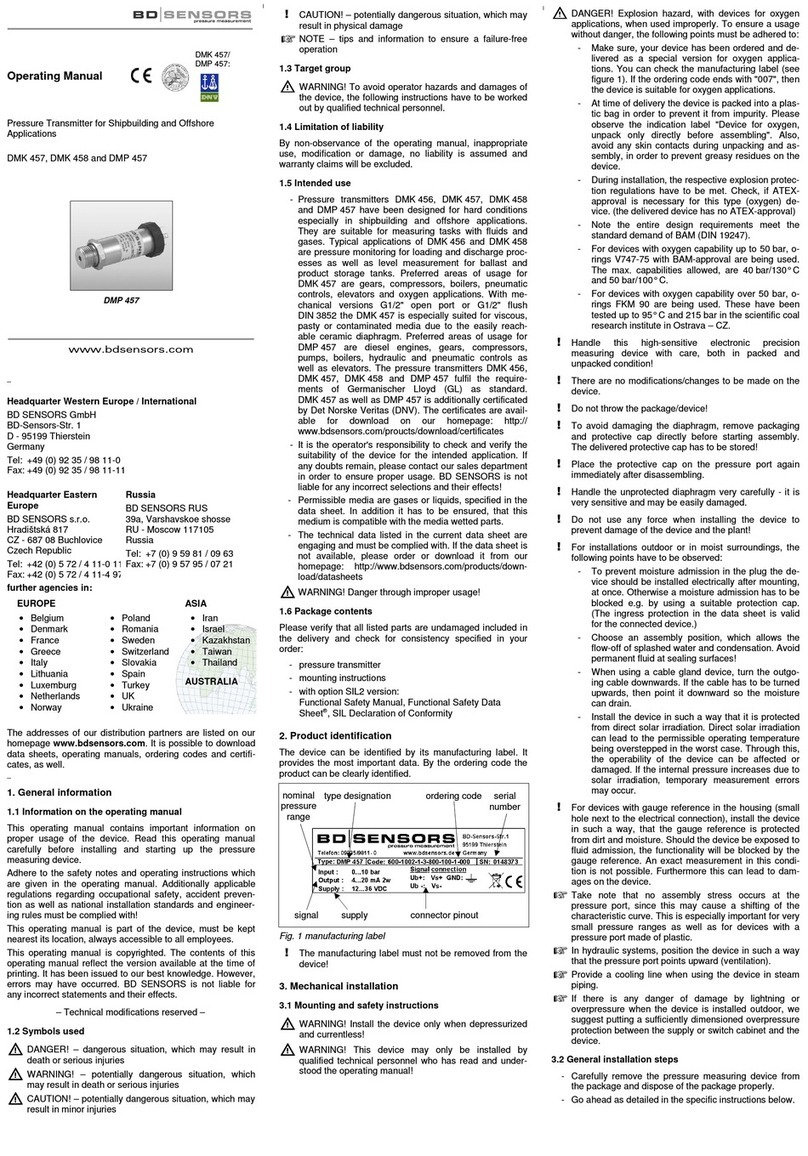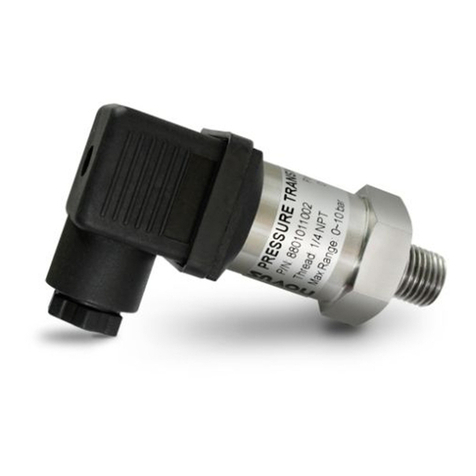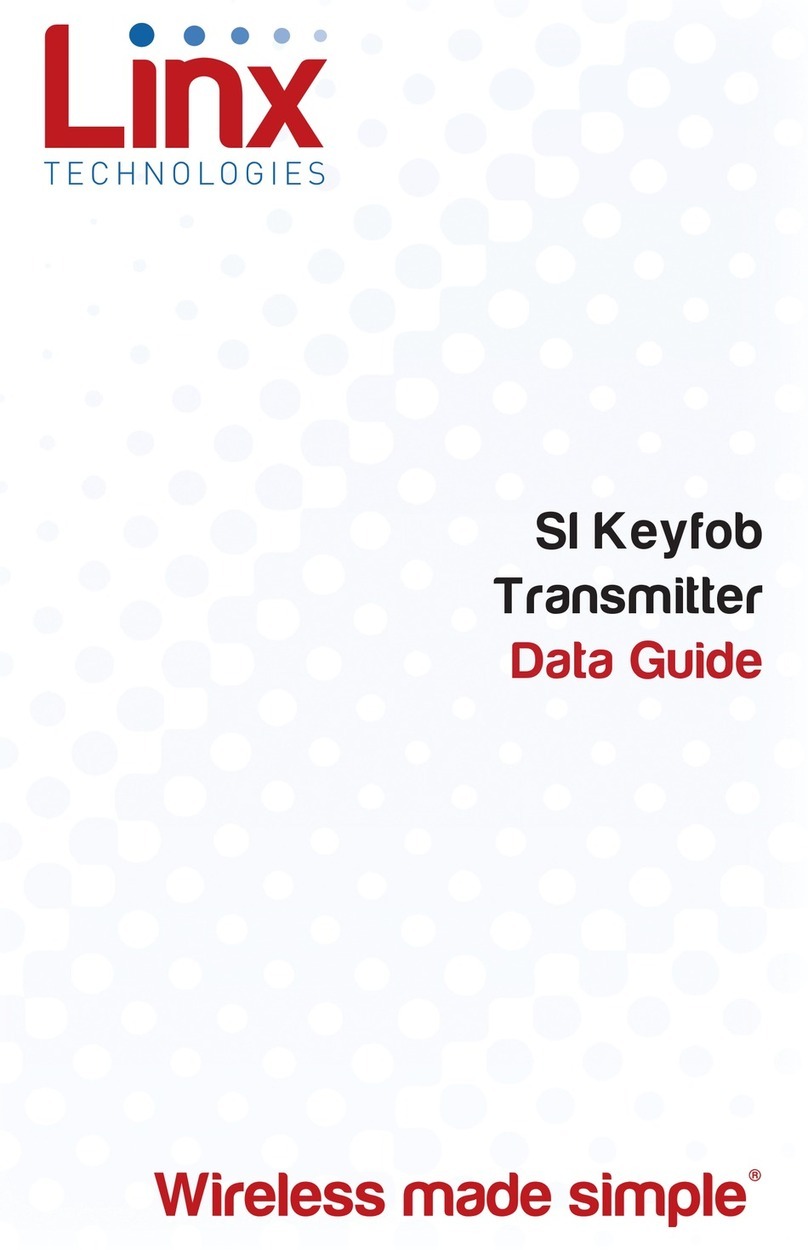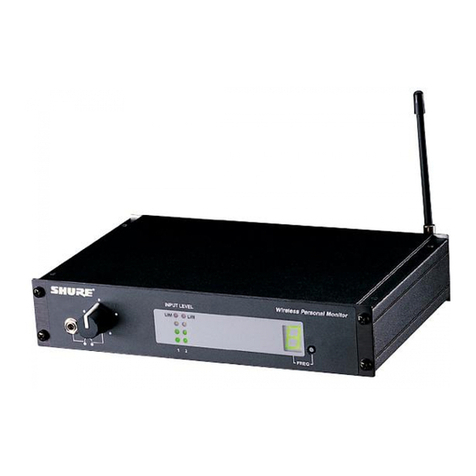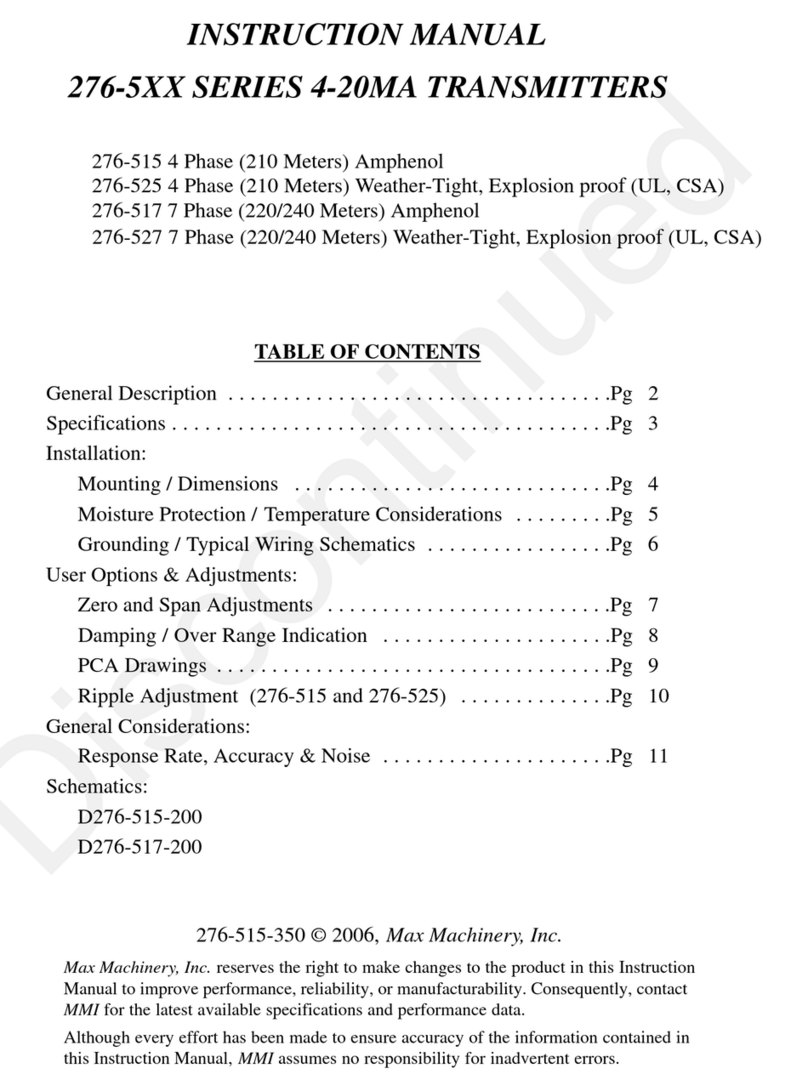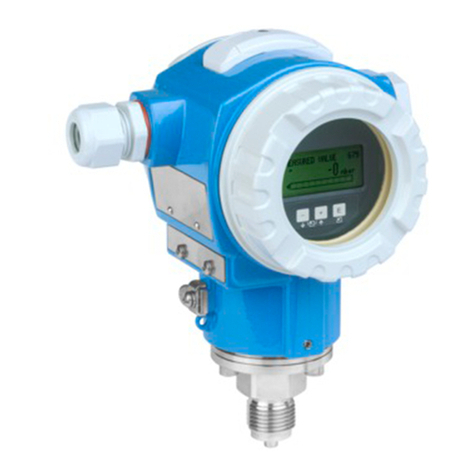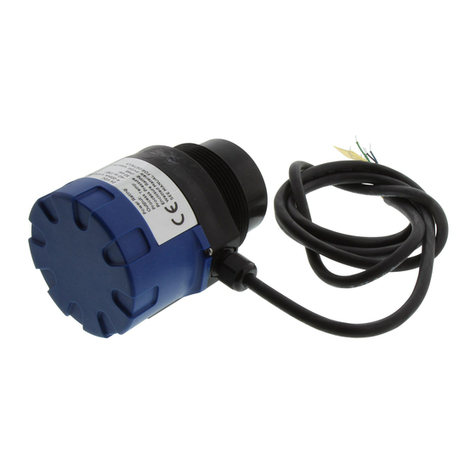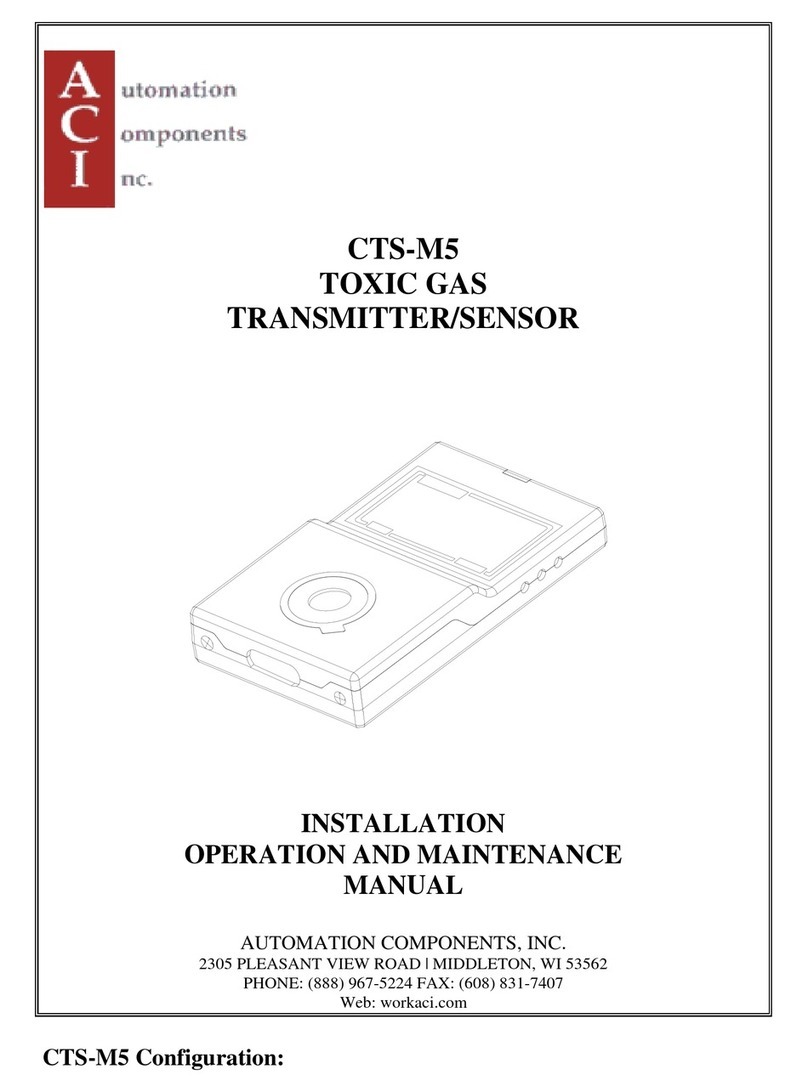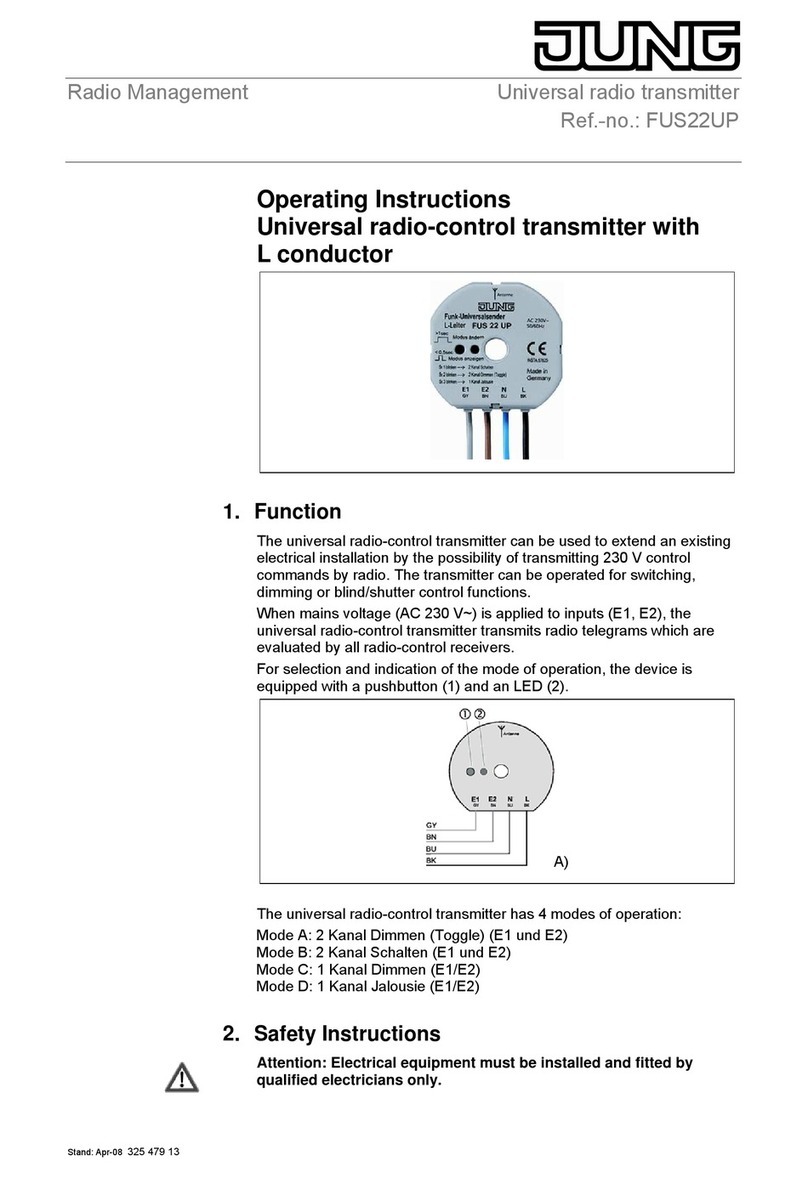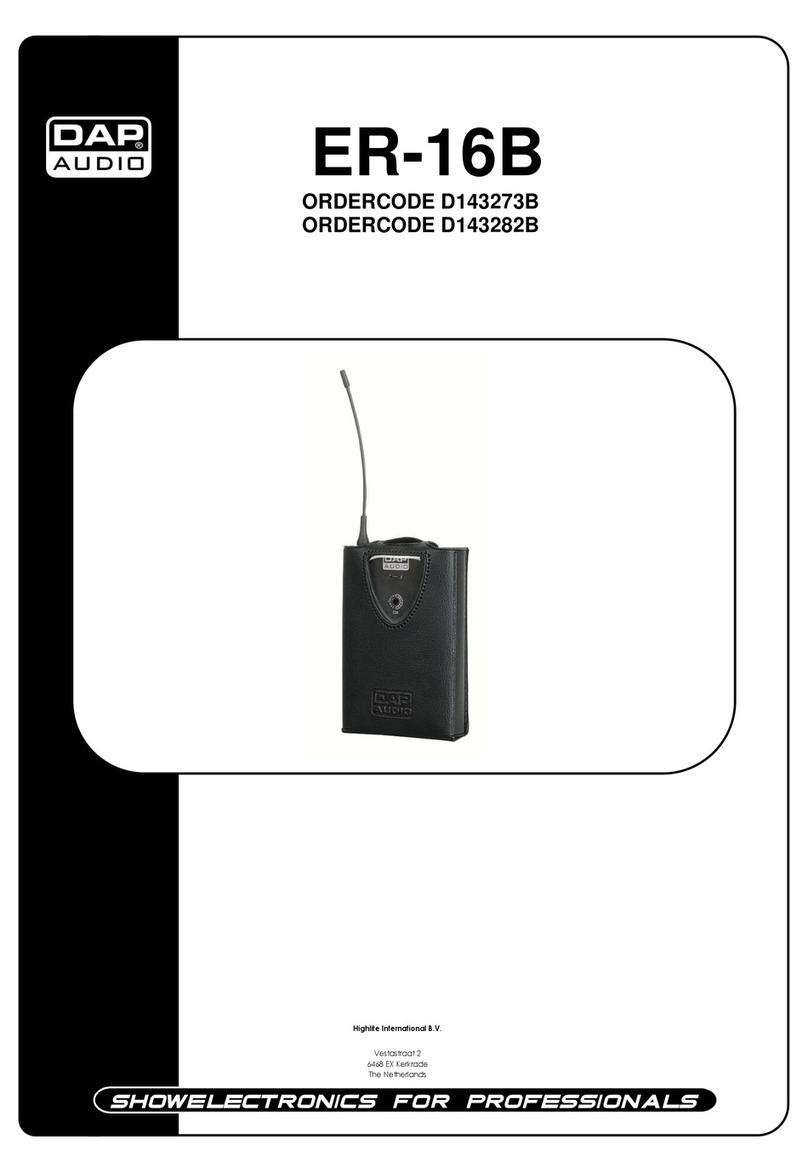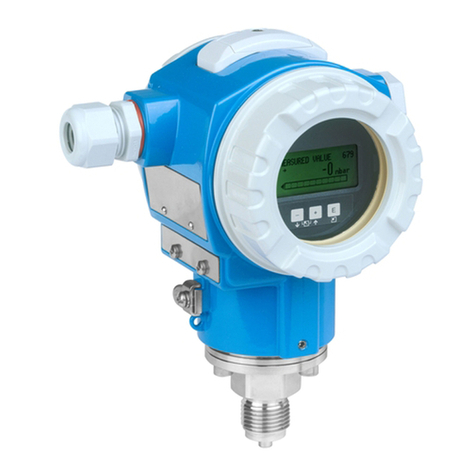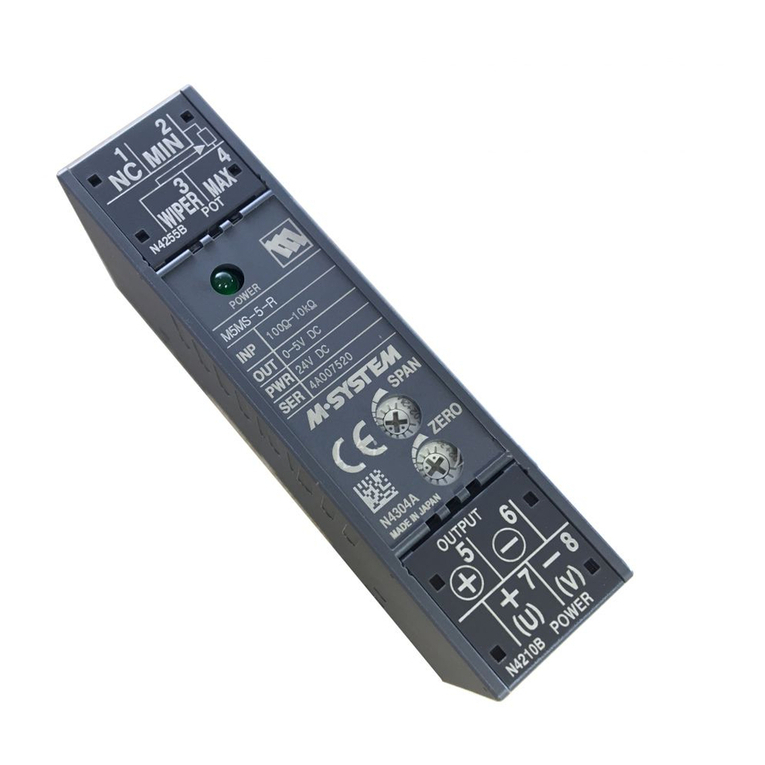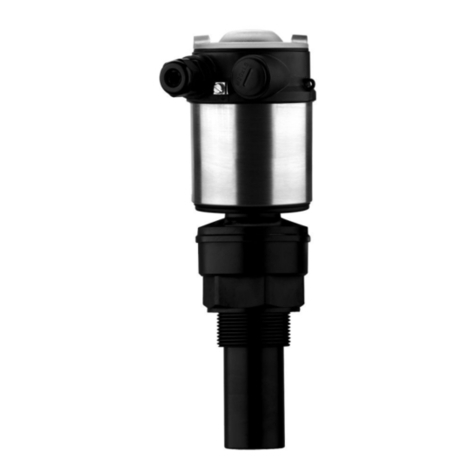PR electrinics 2271V101-IN User manual

Programmable displays with a wide se-
lection of inputs and outputs for display of temperature,
volume and weight, etc. Feature linearisation, scaling,
and difference measurement functions for programming
via PReset software.
Displays
A wide selection of transmitters for DIN
form B mounting and DIN rail modules with analogue
and digital bus communication ranging from application-
specific to universal transmitters.
Temperature
Galvanic isolators for analogue and digital
signals as well as HART®signals. A wide product range
with both loop-powered and universal isolators featuring
linearisation, inversion, and scaling of output signals.
Isolation
Interfaces for analogue and digital
signals as well as HART®signals between sensors / I/P
converters / frequency signals and control systems in Ex
zone 0, 1 & 2 and for some modules in zone 20, 21 & 22.
Ex interfaces
PC or front programmable modules with
universal options for input, output and supply. This range
offers a number of advanced features such as process
calibration, linearisation and auto-diagnosis.
Universal
DK
UK
FR
DE
Side 1
Page 11
Page 23
Seite 35
SIGNALS THE BEST
2271
R/I Transmitter /
Trip Amplifier
No. 2271V101-IN (0903)
From ser. no. 970018001

R/I TRANSMITTER / GRÆNSEKONTAKT
Type 2271
INDHOLDSFORTEGNELSE
Advarsler . . . . . . . . . . . . . . . . . . . . . . . . . . . . . . . . . . . . . . 2
Sikkerhedsregler . . . . . . . . . . . . . . . . . . . . . . . . . . . . . . . . 3
Overensstemmelseserklæring. . . . . . . . . . . . . . . . . . . . . . 5
Adskillelse af SYSTEM 2200. . . . . . . . . . . . . . . . . . . . . . . 6
Anvendelse . . . . . . . . . . . . . . . . . . . . . . . . . . . . . . . . . . . . 7
Teknisk karakteristik . . . . . . . . . . . . . . . . . . . . . . . . . . . . . 7
Indgang . . . . . . . . . . . . . . . . . . . . . . . . . . . . . . . . . . . . . . . 7
Analogudgang . . . . . . . . . . . . . . . . . . . . . . . . . . . . . . . . . . 8
Relæudgang . . . . . . . . . . . . . . . . . . . . . . . . . . . . . . . . . . . 8
Elektriske specifikationer. . . . . . . . . . . . . . . . . . . . . . . . . . 8
Bestillingsskema . . . . . . . . . . . . . . . . . . . . . . . . . . . . . . . . 10
Blokdiagram . . . . . . . . . . . . . . . . . . . . . . . . . . . . . . . . . . . 10
1

SIKKERHEDSREGLER
DEFINITIONER:
Farlige spændinger er defineret som områderne: 75...1500 Volt DC og 50...1000
Volt AC.
Teknikere er kvalificerede personer, som er uddannet eller oplært til at kunne
udføre installation, betjening eller evt. fejlfinding både teknisk og sikkerheds-
mæssigt forsvarligt.
Operatører er personer, som under normal drift med produktet skal indstille og
betjene produktets trykknapper eller potentiometre, og som er gjort bekendt med
indholdet af denne manual.
MODTAGELSE OG UDPAKNING:
Udpak modulet uden at beskadige dette, og sørg for, at manualen altid følger
modulet og er tilgængelig. Indpakningen bør følge modulet, indtil dette er mon-
teret på blivende plads.
Kontrollér ved modtagelsen, at modultypen svarer til den bestilte.
MILJØFORHOLD:
Undgå direkte sollys, kraftigt støv eller varme, mekaniske rystelser og stød, og
udsæt ikke modulet for regn eller kraftig fugt. Om nødvendigt skal opvarmning,
udover de opgivne grænser for omgivelsestemperatur, forhindres ved hjælp af
ventilation.
Alle moduler hører til Installationskategori II, Forureningsgrad 1 og Isolations-
klasse II.
INSTALLATION:
Modulet må kun tilsluttes af teknikere, som er bekendte med de tekniske udtryk,
advarsler og instruktioner i manualen, og som vil følge disse.
Hvis der er tvivl om modulets rette håndtering, skal der rettes henvendelse til den
lokale forhandler eller alternativt direkte til:
PR electronics A/S, Lerbakken 10, DK-8410 Rønde tlf: +45 86 37 26 77.
Installation og tilslutning af modulet skal følge landets gældende regler for instal-
lation af elektrisk materiel bl. a. med hensyn til ledningstværsnit, for-sikring og
placering.
Beskrivelse af indgang / udgang og forsyningsforbindelser findes på blokdia-
grammet og sideskiltet.
32
ADVARSEL
Dette modul er beregnet for tilslutning til livsfarlige elektriske
spændinger. Hvis denne advarsel ignoreres, kan det føre til alvorlig
legemsbeskadigelse eller mekanisk ødelæggelse. For at undgå
faren for elektriske stød og brand skal manualens sikkerhedsregler
overholdes, og vejledningerne skal følges. De elektriske specifi-
kationer må ikke overskrides, og modulet må kun benyttes som
beskrevet i det følgende. Manualen skal studeres omhyggeligt,
før modulet tages i brug. Kun kvalificeret personale (teknikere) må
installere dette modul. Hvis modulet ikke benyttes som beskrevet i
denne manual, så forringes modulets beskyttelsesforanstaltninger.
ADVARSEL
Der må ikke tilsluttes farlig spænding til modulet, før dette er fast-
monteret, og følgende operationer på modulet bør kun udføres i
spændingsløs tilstand og under ESD-sikre forhold:
Adskillelse af modulet for indstilling af omskiftere og jumpere.
Installation, ledningsmontage og -demontage.
Fejlfinding på modulet.
Reparation af modulet og udskiftning af sikringer må kun
foretages af PR electronics A/S.
ADVARSEL
For at overholde sikkerhedsafstande må moduler med to indbyg-
gede relæer ikke tilsluttes både farlig og ikke-farlig spænding på
samme moduls relækontakter.
SYSTEM 2200 monteres i sokkel type S3B Releco (bestillings-
nummer 7023).
Trekant med udråbstegn: Advarsel / krav. Hændelser der kan
føre til livstruende situationer.
CE-mærket er det synlige tegn på modulets overensstemmelse
med direktivernes krav.
Dobbelt isolation er symbolet for, at modulet overholder ekstra
krav til isolation.
SIGNATURFORKLARING
FARLIG
SPÆNDING
INSTAL-
LATION
GENERELT

OVERENSSTEMMELSESERKLÆRING
Som producent erklærer
PR electronics A/S
Lerbakken 10
DK-8410 Rønde
hermed at følgende produkt:
Type: 2271
Navn: R/I transmitter / Grænsekontakt
er i overensstemmelse med følgende direktiver og standarder:
EMC-direktivet 2004/108/EF og senere tilføjelser
EN 61326-1
For specifikation af det acceptable EMC-niveau henvises til modulets
elektriske specifikationer.
Lavspændingsdirektivet 2006/95/EF og senere tilføjelser
EN 61010-1
CE-mærket for overensstemmelse med lavspændingsdirektivet blev tilføjet i
året: 1997
Rønde, 14. januar 2009 Peter Rasmussen
Producentens underskrift
5
For moduler, som er permanent tilsluttet farlig spænding, gælder:
For-sikringens maksimale størrelse er 10 A og skal sammen med
en afbryder placeres let tilgængelig og tæt ved modulet. Afbryderen
skal mærkes således, at der ikke er tvivl om, at den afbryder spæn-
dingen til modulet.
KALIBRERING OG JUSTERING:
Under kalibrering og justering skal måling og tilslutning af eksterne spændinger
udføres i henhold til denne manual, og teknikeren skal benytte sikkerhedsmæs-
sigt korrekte værktøjer og instrumenter.
BETJENING UNDER NORMAL DRIFT:
Operatører må kun indstille eller betjene modulerne, når disse er fast installeret
på forsvarlig måde i tavler el. lignende, så betjeningen ikke medfører fare for liv
eller materiel. Dvs., at der ikke er berøringsfare, og at modulet er placeret, så det
er let at betjene.
RENGØRING:
Modulet må, i spændingsløs tilstand, rengøres med en klud let fugtet med destil-
leret vand.
ANSVAR:
I det omfang, instruktionerne i denne manual ikke nøje er overholdt, vil kunden
ikke kunne rette noget krav, som ellers måtte eksistere i henhold til den indgåede
salgsaftale, mod PR electronics A/S.
4

R/I TRANSMITTER / GRÆNSEKONTAKT
2271
• Indgang for Pt100, Ni100 eller Ohm
• Følerkabelkompensering
• Lineariseret analogudgang
• 24 VDC forsyning
• Justerbar alarmgrænse
• Monteres i 11 polet relæsokkel
ANVENDELSE:
Lineariseret temperaturmåling med Pt100 eller Ni100 føler. •Omsætning af
lineær modstandsændring til standard analogt strøm- / spændingssignal, f.eks.
fra ventiler, spjæld eller lineære bevægelser med påmonteret potentiometer.
• Som grænsekontakt med justerbar alarmgrænse, der kan benyttes som alarm-
detektor eller simpel regulator.
TEKNISK KARAKTERISTIK:
GENERELT:
Enheden er opbygget omkring en mikroprocessorkerne med en effektiv programaf-
vikling. Forsyningsspændingen er 24 VDC med samme referencepunkt for
forsynings- og udgangsstel. Justeringsområdet for 0% (P4) og 100% (P6) trim-
merne er standard indstillet til 5% af span, men kan bestilles med justeringsom-
råde på op til 50% af span. Følertilslutningen er altid en 3-leder tilslutning med
kabelkompensering for op til 10 Ω i hver leder. Hvis 2-leder tilslutning ønskes, skal
ben 7 og 6 kortsluttes i soklen (ingen kabelkompensering). Følerfejlsdetektering
er standard indstillet til Upscale, men kan bestilles til Downscale.
INDGANG:
Lineariseret Pt100 temperaturindgang efter normen IEC 751 i området
-200 ...+850°C. Lineariseret Ni100 temperaturindgang efter normen DIN 43760 i
området -50...+250°C.
Lineær modstandsindgang i området 0...10 kΩ.
Måleområde oplyses ved ordre, f.eks. 0...150°C. Min. span er for RTD-indgang
50°C, for lineær modstand 30 Ω.
RTD-indgangen kan leveres opsat i multipla af hovedtypen (f.eks. Pt1000). Ind-
gangen kan reverseres, så 0% f.eks. er 150°C og 100% er 0°C.
76
ADSKILLELSE AF SYSTEM 2200
Billede 1:
Modulets bagplade frigøres fra huset
ved hjælp af en skruetrækker.
Billede 2:
Derefter kan bagpladen udtræk-
kes sammen med printet, men vær
opmærksom på printets placering
i huset, da det er muligt at isætte
dette i flere positioner. Træk ikke
unødigt i ledningerne, men tag fat
i printet.
Nu kan switche og jumpere ændres.
Det er vigtigt, at ingen ledninger
kommer i klemme, når bagplade og
huset samles.

Indgang:
Max. nulpunktsforskydning........................ 50% af valgt max. værdi
Justeringsmulighed efter ordre .................. ±2,5...±25% af span
Kabelmodstand pr. leder max. ................... 10 Ω
Følerstrøm .................................................. > 0,2 mA, < 0,4 mA
Primær nøjagtighed.................................... < ±0,3°C
Temp. koefficient for span < 100° C .......... < ±0,01°C / °Comg.
Følerfejlsindikering ..................................... Upscale / Downscale
Udgang:
Signalområde ............................................. 0...20 mA / 0...10 VDC
Min. signalområde...................................... 5 mA / 250 mV
Max. nulpunktsforskydning........................ 50% af valgt max. værdi
Belastning (max.)........................................ 20 mA / 600 Ω/ 12 VDC
Belastningsstabilitet ................................... < 0,01% af span / 100 Ω
Strømbegrænsning..................................... < 28 mA
Relæudgang:
Isolation, test / drift .................................... 1,4 kVAC / 150 VAC
Skalaoverensstemmelse............................. Bedre end 5%
Hysterese, justerbar ................................... 1...10% af span
Max. AC-effekt ........................................... 300 VA / 150 VRMS, 2A
Max. belastning ved 24 VDC ..................... 1 A
GOST R godkendelse:
VNIIM, Cert. no........................................... Se www.prelectronics.dk
Overholdte myndighedskrav: Standard:
EMC 2004/108/EF...................................... EN 61326-1
LVD 2006/95/EF ......................................... EN 61010-1
Af span = Af det aktuelt valgte område
9
ANALOGUDGANG:
Analog standard strømudgang på 0/4...20 mA. Udgangen kan bestilles til vilkår-
lige værdier indenfor standardværdierne med max. offset på 50% af max. værdi
og minimum span på 5 mA. Maximum belastning er 600 Ω/ 12 VDC. Ved kort-
slutning af ben 3 og 2 bliver udgangsstrømmen omsat til standard spænding på
0/0,2...1 VDC (JP1 ON) eller 0/2...10 VDC (JP2 ON).
Spændingssignalet udtages mellem ben 2 og 1. Minimum belastningsmodstand
for spændingssignaler er 500 kΩ.
RELÆUDGANG:
Potentiometer for indstilling af alarmgrænse er ført ud i kassettens front og ind-
stillingen dækker hele indgangsområdet (skala 0...100%).
Setpunktsindstillingen kan bestilles med knap (knob) eller kærv (notch) for skrue-
trækkerindstilling. Relæudgangen er en potentialefri skiftekontakt, som med
JP3 kan programmeres til at aktivere for stigende (Inc) eller faldende (Dec) ind-
gangssignal. Hysteresen kan med P5 indstilles til 1...10% af span. Ved stigende
relæfunktion ligger hysteresen under setpunktet, ved faldende over. Lysdiode i
kassettens front indikerer aktiveret relæ.
ELEKTRISKE SPECIFIKATIONER:
Specifikationsområde:
-20°C til +60°C
Fælles specifikationer:
Forsyningsspænding.................................. 19,2...28,8 VDC
Egetforbrug ................................................ 1,6 W (relæ aktivt)
Opvarmningstid.......................................... < 5 min.
Signal- / støjforhold.................................... Min. 60 dB
Signaldynamik, indgang............................. 17 bit
Signaldynamik, udgang.............................. 16 bit
Reaktionstid (0...90%, 100...0%) ............... < 165 ms
Kalibreringstemperatur............................... 20...28°C
Temperaturkoefficient:
Span < 100°C ........................................ ±0,01°C / °Comg.
Span > 100°C ........................................ ±0,01% af span / °Comg.
Linearitetsfejl .............................................. < 0,1% af span
EMC-immunitetspåvirkning........................ < ±0,5%
Relativ fugtighed ........................................ < 95% RH (ikke kond.)
Mål (HxBxD) ............................................... 80,5 x 35,5 x 84,5 mm
Kapslingsklasse.......................................... IP50
Vægt........................................................... 130 g
8
Type Min. værdi Max. værdi Min. span Standard
Pt100 -200°C +850°C 50°C IEC 751
Ni100 -50°C +250°C 50°C DIN 43760
Lin.R 0 Ω10 kΩ30 Ω -----

R/I TRANSMITTER / TRIP AMPLIFIER
Type 2271
CONTENTS
Warnings . . . . . . . . . . . . . . . . . . . . . . . . . . . . . . . . . . . . . . 12
Safety instructions. . . . . . . . . . . . . . . . . . . . . . . . . . . . . . . 14
Declaration of Conformity . . . . . . . . . . . . . . . . . . . . . . . . . 16
How to dismantle SYSTEM 2200 . . . . . . . . . . . . . . . . . . . 17
Application. . . . . . . . . . . . . . . . . . . . . . . . . . . . . . . . . . . . . 18
Technical characteristics . . . . . . . . . . . . . . . . . . . . . . . . . . 18
Input . . . . . . . . . . . . . . . . . . . . . . . . . . . . . . . . . . . . . . . . . 18
Analogue output . . . . . . . . . . . . . . . . . . . . . . . . . . . . . . . . 19
Relay output . . . . . . . . . . . . . . . . . . . . . . . . . . . . . . . . . . . 19
Electrical specifications. . . . . . . . . . . . . . . . . . . . . . . . . . . 19
Order . . . . . . . . . . . . . . . . . . . . . . . . . . . . . . . . . . . . . . . . . 21
Block diagram . . . . . . . . . . . . . . . . . . . . . . . . . . . . . . . . . . 21
1110
BESTILLINGSSKEMA:
BLOKDIAGRAM:
Ved 2-trådsforbindelse skal ben 6 og 7 kortsluttes i soklen.
Type Indgang Udgang Relæaktivering Setpunkt
2271 Pt100 : L
Ni100 : N
Lin. R : R
Speciel : X
Speciel : 0
0...20 mA : 1
4...20 mA : 2
0...5 mA : 3
Setpunkt knap : 1
Setpunkt kærv : 2
For stigende
indgang : A
For faldende
indgang : B

1312
SYMBOL IDENTIFICATION
Triangle with an exclamation mark: Warning / demand.
Potentially lethal situations.
The CE mark proves the compliance of the module with
the requirements of the directives.
The double insulation symbol shows that the module is
protected by double or reinforced insulation.
WARNING!
This module is designed for connection to hazardous electric
voltages. Ignoring this warning can result in severe personal
injury or mechanical damage.
To avoid the risk of electric shock and fire, the safety instructions
of this manual must be observed and the guidelines followed.
The electrical specifications must not be exceeded, and the
module must only be applied as described in the following.
Prior to the commissioning of the module, this manual must be
examined carefully.
Only qualified personnel (technicians) should install this module.
If the equipment is used in a manner not specified by the
manufacturer, the protection provided by the equipment may
be impaired.
WARNING!
Until the module is fixed, do not connect hazardous voltages to
the module. The following operations should only be carried out
on a disconnected module and under ESD safe conditions:
Dismantlement of the module for setting of DIP-switches
and jumpers.
General mounting, connection and disconnection of wires.
Troubleshooting the module.
Repair of the module and replacement of circuit breakers
must be done by PR electronics A/S only.
WARNING!
To keep the safety distances, modules with two built-in relays
must not be connected to both hazardous and non-hazardous
voltages on the same module’s relay contacts.
SYSTEM 2200 must be mounted in socket type S3B Releco
(order no 7023).
GENERAL
HAZARD-
OUS
VOLTAGE
INSTAL-
LATION

The following apply to fixed hazardous voltages-connected modules:
The max. size of the protective fuse is 10 A and, together with a power
switch, it should be easily accessible and close to the module. The
power switch should be marked with a label telling it will switch off the
voltage to the module.
CALIBRATION AND ADJUSTMENT:
During calibration and adjustment, the measuring and connection of external
voltages must be carried out according to the specifications of this manual. The
technician must use tools and instruments that are safe to use.
NORMAL OPERATION:
Operators are only allowed to adjust and operate modules that are safely fixed in
panels, etc., thus avoiding the danger of personal injury and damage. This means
there is no electrical shock hazard, and the module is easily accessible.
CLEANING:
When disconnected, the module may be cleaned with a cloth moistened with
distilled water.
LIABILITY:
To the extent the instructions in this manual are not strictly observed, the
customer cannot advance a demand against PR electronics A/S that would
otherwise exist according to the concluded sales agreement.
15
SAFETY INSTRUCTIONS
DEFINITIONS:
Hazardous voltages have been defined as the ranges: 75 to 1500 Volt DC, and
50 to 1000 Volt AC.
Technicians are qualified persons educated or trained to mount, operate, and
also troubleshoot technically correct and in accordance with safety regulations.
Operators, being familiar with the contents of this manual, adjust and operate the
knobs or potentiometers during normal operation.
RECEIPT AND UNPACKING:
Unpack the module without damaging it and make sure that the manual always
follows the module and is always available. The packing should always follow the
module until this has been permanently mounted.
Check at the receipt of the module whether the type corresponds to the one
ordered.
ENVIRONMENT:
Avoid direct sunlight, dust, high temperatures, mechanical vibrations and shock,
as well as rain and heavy moisture. If necessary, heating in excess of the stated
limits for ambient temperatures should be avoided by way of ventilation.
All modules fall under Installation Category II, Pollution Degree 1, and Insulation
Class II.
MOUNTING:
Only technicians who are familiar with the technical terms, warnings, and
instructions in the manual and who are able to follow these should connect the
module.
Should there be any doubt as to the correct handling of the module, please
contact your local distributor or, alternatively,
PR electronics A/S, Lerbakken 10, DK-8410 Rønde, Denmark
tel: +45 86 37 26 77
Mounting and connection of the module should comply with national legislation
for mounting of electric materials, i.a. wire cross section, protective fuse, and
location. Descriptions of Input / Output and supply connections are shown in the
block diagram and side label.
14

HOW TO DISMANTLE SYSTEM 2200
Picture 1:
The back panel of the module is
detached from the housing by way
of a screw-driver.
Picture 2:
After this, the back panel can be
pulled out together with the PCB,
but please notice the position of
the PCB as there is a number of
different positions in the house. Do
not pull the wires unnecessarily,
instead pull the PCB.
Switches and jumpers can now be
moved.
When assembling the back plate
and housing, please make sure no
wires are stuck.
17
DECLARATION OF CONFORMITY
As manufacturer
PR electronics A/S
Lerbakken 10
DK-8410 Rønde
hereby declares that the following product:
Type: 2271
Name: R/i transmitter / Trip amplifier
is in conformity with the following directives and standards:
The EMC Directive 2004/108/EC and later amendments
EN 61326-1
For specification of the acceptable EMC performance level, refer to the
electrical specifications for the module.
The Low Voltage Directive 2006/95/EC and later amendments
EN 61010-1
The CE mark for compliance with the Low Voltage directive was affixed in the
year: 1997
Rønde, 14 January 2009 Peter Rasmussen
Manufacturer’s signature
16

can be delivered as multiples of the main type (e.g. Pt1000). The input can be
reversed so that 0% e.g. is 150°C and 100% is 0°C.
ANALOGUE OUTPUT:
Analogue standard current output of 0/4...20 mA. The output may be ordered to
any value within the standard values with a max. offset of 50% of the max. value
and a min. span of 5 mA. The maximum load is 600 Ω / 12 VDC. By short-circuiting
of pins 3 and 2 the output current will be converted to standard voltage of 0/0.2...1
VDC (JP1 ON) or 0/2...10 VDC (JP2 ON). The voltage signal is available between
pins 2 and 1. The min. load resistance for voltage signals is 500 kΩ.
RELAY OUTPUT:
Potentiometer for alarm limit adjustment is front-panel-mounted and covers the
entire measurement range (scale 0...100%). The setpoint adjustment may be
ordered with knob or notch for screwdriver adjustment. The relay output is an
uncommitted change-over contact which can be programmed to activate for
increasing (inc) or decreasing (dec) input signal with JP3. The hysteresis can with
P5 be set to 1...10% of span.
By increasing relay function the hysteresis is below the setpoint, by decreasing
above. An LED in the cassette front indicates an activated relay.
ELECTRICAL SPECIFICATIONS:
Specifications range:
-20°C to +60°C
Common specifications:
Supply voltage ........................................... 19.2...28.8 VDC
Internal consumption ................................. 1.6 W (relay active)
Warm-up time............................................. < 5 min.
Signal / noise ratio ..................................... Min. 60 dB
Signal dynamics, input............................... 17 bit
Signal dynamics, output ............................ 16 bit
Response time (0...90%, 100...10%) ......... < 165 ms
Calibration temperature ............................. 20...28°C
Temperature coefficient:
Span < 100°C ........................................ ±0.01°C / °Camb.
Span > 100°C ........................................ ±0.01% of span / °Camb.
Linearity error ............................................. < 0.1% of span
EMC immunity influence ............................ < ±0.5%
Relative air humidity................................... < 95% RH (non-cond.)
19
R/I TRANSMITTER / TRIP AMPLIFIER
2271
• Input for Pt100, Ni100, or Ohm
• Sensor cable compensation
• Linearised analogue output
• 24 VDC supply
• Adjustable alarm limit
• For mounting in 11-pole relay socket
APPLICATION:
Linearised temperature measurement with Pt100 or Ni100 sensor. •Conversion
of linear resistance change to standard analogue current / voltage signal from
e.g. valves or linear movements with attached potentiometer. • As trip amplifier
with adjustable alarm limit which may be used as an alarm detector or a simple
controller.
TECHNICAL CHARACTERISTICS:
GENERAL:
The unit is built up around a microprocessor core with an efficient program flow.
The supply voltage is 24 VDC with the same reference point for supply and
output ground. The adjustment range for 0% (P4) and 100% (P6) trimmers is as
standard set to 5% of span, but can be ordered with an adjustment range up to
50% of span. The sensor connection is always a 3-wire connection with cable
compensation for up to 10 Ωin each wire. If a 2-wire connection is requested,
pins 7 and 6 must be short-circuited in the socket (no cable compensation).
Sensor error detection is standard set to Upscale, but may be ordered to
Downscale.
INPUT:
Linearised Pt100 temperature input according to the norm IEC 751 within the
range -200...+850°C. Linearised Ni100 temperature input according to the norm
DIN 43760 within the range -50...+250°C. Linear resistance input within the range
0...10 kΩ.
Measurement range should be specified when placing the order e.g. 0...150°C.
For RTD input the min. span is 50°C, for linear resistance 30 Ω. The RTD input
18

2120
ORDER:
BLOCK DIAGRAM:
Type Input Output Relay action Setpoint
2271 Pt100 : L
Ni100 : N
Lin. R : R
Special : X
Special : 0
0...20 mA : 1
4...20 mA : 2
0...5 mA : 3
Setpoint knob : 1
Setpoint notch : 2
At increasing
input : A
At decreasing
input : B
For 2-wire connection pins 6 and 7 must be short-circuited in the socket.
Dimensions (HxWxD).................................. 80.5 x 35.5 x 84.5 mm
Protection degree....................................... IP50
Weight ........................................................ 130 g
Input:
Max. offset ................................................. 50% of selected max. value
Adjustment acc. to order ........................... ±2.5...±25% of span
Cable resistance per wire max................... 10 Ω
Sensor current............................................ > 0.2 mA, < 0.4 mA
Basic accuracy........................................... < ±0.3°C
Temp. coefficient for span < 100° C .......... < ±0.01°C / °Camb.
Sensor error indication............................... Upscale / Downscale
Output:
Signal range ............................................... 0...20 mA / 0...10 VDC
Min. signal range........................................ 5 mA / 250 mV
Max. offset ................................................. 50% of selected max. value
Load (max.)................................................. 20 mA / 600 Ω/ 12 VDC
Load stability.............................................. < 0.01% of span / 100 Ω
Current limit................................................ < 28 mA
Relay output:
Isolation, test / operation ........................... 1.4 kVAC / 150 VAC
Scale accuracy........................................... Better than 5%
Hysteresis, adjustable ................................ 1...10% of span
Max. AC power .......................................... 300 VA / 150 VRMS, 2 A
Max. load at 24 VDC.................................. 1 A
GOST R approval:
VNIIM, Cert. no........................................... See www.prelectronics.com
Observed authority requirements: Standard:
EMC 2004/108/EC ..................................... EN 61326-1
LVD 2006/95/EC......................................... EN 61010-1
Of span = Of the presently selected range
Type Min. value Max. value Min. span Standard
Pt100 -200°C +850°C 50°C IEC 751
Ni100 -50°C +250°C 50°C DIN 43760
Lin. R 0 Ω10 kΩ30 Ω -----

2322
CONVERTISSEUR Pt100 /
RELAIS A SEUIL
Type 2271
SOMMAIRE
Avertissements . . . . . . . . . . . . . . . . . . . . . . . . . . . . . . . . . 24
Consignes de sécurité. . . . . . . . . . . . . . . . . . . . . . . . . . . . 26
Déclaration de conformité. . . . . . . . . . . . . . . . . . . . . . . . . 28
Démontage du SYSTEME 2200 . . . . . . . . . . . . . . . . . . . . 29
Applications. . . . . . . . . . . . . . . . . . . . . . . . . . . . . . . . . . . . 30
Caractéristiques techniques . . . . . . . . . . . . . . . . . . . . . . . 30
Entrée . . . . . . . . . . . . . . . . . . . . . . . . . . . . . . . . . . . . . . . . 31
Sortie analogique . . . . . . . . . . . . . . . . . . . . . . . . . . . . . . . 31
Sortie relais . . . . . . . . . . . . . . . . . . . . . . . . . . . . . . . . . . . . 31
Spécifications électriques . . . . . . . . . . . . . . . . . . . . . . . . . 32
Référence de commande . . . . . . . . . . . . . . . . . . . . . . . . . 34
Schéma de principe . . . . . . . . . . . . . . . . . . . . . . . . . . . . . 34

2524
AVERTISSEMENT !
Ce module est conçu pour supporter une connexion à des
tensions électriques dangereuses. Si vous ne tenez pas compte
de cet avertissement, cela peut causer des dommages corporels
ou des dégâts mécaniques.
Pour éviter les risques d’électrocution et d’incendie, conformez-
vous aux consignes de sécurité et suivez les instructions
mentionnées dans ce guide. Vous devez vous limiter aux
spécifications indiquées et respecter les instructions d’utilisation
de ce module, telles qu’elles sont décrites dans ce guide.
Il est nécessaire de lire ce guide attentivement avant de mettre
ce module en marche. L’installation de ce module est réservée à
un personnel qualifié (techniciens). Si la méthode d’utilisation de
l’équipement diffère de celle décrite par le fabricant, la protection
assurée par l’équipement risque d’être altérée.
AVERTISSEMENT !
Tant que le module n’est pas fixé, ne le mettez par sous tensions
dangereuses.
Les opérations suivantes doivent être effectuées avec le module
débranché et dans un environnement exempt de décharges
électrostatiques (ESD) : démontage du module pour régler
les commutateurs DIP et les cavaliers, montage général,
raccordement et débranchement de fils et recherche de pannes
sur le module.
Seule PR electronics SARL est autorisée à réparer le module
et à remplacer les disjoncteurs.
AVERTISSEMENT !
Afin de conserver les distances de sécurité, les modules à deux
relais intégrés ne doivent pas être mis sous tensions dangereuses
et non dangereuses sur les mêmes contacts du relais du module.
Il convient de monter l’appareil SYSTEM 2200 sur un support du
type S3B Releco (numéro de référence 7023).
INFOR-
MATIONS
GENERALES
TENSION
DANGE-
REUSE
INSTAL-
LATION
SIGNIFICATION DES SYMBOLES
Triangle avec point d’exclamation : Attention ! Si vous ne
respectez pas les instructions, la situation pourrait être fatale.
Le signe CE indique que le module est conforme aux
exigences des directives.
Ce symbole indique que le module est protégé par une
isolation double ou renforcée.

Le montage et le raccordement du module doivent être conformes à la législation
nationale en vigueur pour le montage de matériaux électriques, par exemple,
diamètres des fils, fusibles de protection et implantation des modules. Les
connexions des alimentations et des entrées / sorties sont décrites dans le
schéma de principe et sur l’étiquette de la face latérale du module.
Les instructions suivantes s’appliquent aux modules fixes connectés en tensions
dangereuses :
Le fusible de protection doit être de 10 A au maximum. Ce dernier,
ainsi que l’interrupteur général, doivent être facilement accessibles et à
proximité du module. Il est recommandé de placer sur l’interupteur
général une étiquette indiquant que ce dernier mettra le module hors
tension.
ETALONNAGE ET REGLAGE
Lors des opérations d’étalonnage et de réglage, il convient d’effectuer les mesures
et les connexions des tensions externes en respectant les spécifications
mentionnées dans ce guide.
Les techniciens doivent utiliser des outils et des instruments pouvant être
manipulés en toute sécurité.
MANIPULATIONS ORDINAIRES
Les opérateurs sont uniquement autorisés à régler et faire fonctionner des modules
qui sont solidement fixés sur des platines des tableaux, ect., afin d’écarter les
risques de dommages corporels. Autrement dit, il ne doit exister aucun danger
d’électrocution et le module doit être facilement accessible.
MAINTENANCE ET ENTRETIEN
Une fois le module hors tension, prenez un chiffon humecté d’eau distillée pour
le nettoyer.
LIMITATION DE RESPONSABILITE
Dans la mesure où les instructions de ce guide ne sont pas strictement
respectées par le client, ce dernier n’est pas en droit de faire une réclamation
auprès de PR electronics SARL, même si cette dernière figure dans l’accord de
vente conclu.
27
CONSIGNES DE SECURITE
DEFINITIONS
Les gammes de tensions dangereuses sont les suivantes : de 75 à 1500 Vcc et de
50 à 1000 Vca. Les techniciens sont des personnes qualifiées qui sont capables
de monter et de faire fonctionner un appareil, et d’y rechercher les pannes, tout
en respectant les règles de sécurité. Les opérateurs, connaissant le contenu de
ce guide, règlent et actionnent les boutons ou les potentiomètres au cours des
manipulations ordinaires.
RECEPTION ET DEBALLAGE
Déballez le module sans l’endommager. Le guide doit toujours être disponible
et se trouver à proximité du module. De même, il est recommandé de conserver
l’emballage du module tant que ce dernier n’est pas définitivement monté. A la
réception du module, vérifiez que le type de module reçu correspond à celui que
vous avez commandé.
ENVIRONNEMENT
N’exposez pas votre module aux rayons directs du soleil et choisissez un endroit
à humidité modérée et à l’abri de la poussière, des températures élevées, des
chocs et des vibrations mécaniques et de la pluie. Le cas échéant, des systèmes
de ventilation permettent d’éviter qu’une pièce soit chauffée au-delà des limites
prescrites pour les températures ambiantes.
Tous les modules appartiennent à la catégorie d’installation Il, au degré de
pollution 1 et à la classe d’isolation Il.
MONTAGE
Il est conseillé de réserver le raccordement du module aux techniciens qui
connaissent les termes techniques, les avertissements et les instructions de ce
guide et qui sont capables d’appliquer ces dernières.
Si vous avez un doute quelconque quant à la manipulation du module, veuillez
contacter votre distributeur local. Vous pouvez également vous adresser à PR
electronics SARL, Zac du Chêne, Activillage, 4, allée des Sorbiers, F-69673
Bron Cedex (tél. : (0) 472 140 607) ou à PR electronics A/S, Lerbakken 10,
DK-8410 Rønde, Danemark (tél. : +45 86 37 26 77).
26

DEMONTAGE DU SYSTEME 2200
Figure 1 :
A l’aide d’un tournevis, dégagez la
face arrière du module du boîtier.
Figure 2 :
Vous pouvez maintenant extraire la
face arrière du module ainsi que la
carte à circuits imprimés. Veuillez
repérer la position de cette carte car
il existe de nombreuses positions
possibles dans le boîtier. Lorsque
vous extrayez la carte à circuits
imprimés, tirez sur celle-ci et évitez
de tirer sur les fils.
Vous pouvez maintenant déplacer
les commutateurs et les cavaliers.
Lorsque vous assemblez la face
arrière du module et le boîtier,
veuillez vérifier que les fils ne sont
pas coincés.
29
DECLARATION DE CONFORMITE
En tant que fabricant
PR electronics A/S
Lerbakken 10
DK-8410 Rønde
déclare que le produit suivant :
Type : 2271
Nom : Convertisseur Pt 100 / Relais à seuil
correspond aux directives et normes suivantes :
La directive CEM (EMC) 2004/108/CE et les modifications subséquentes
EN 61326-1
Pour une spécification du niveau de rendement acceptable CEM (EMC)
renvoyer aux spécifications électriques du module.
La directive basse tension 2006/95/CE et les modifications subséquentes
EN 61010-1
La marque CE pour conformité avec la directive basse tension a été apposée
en 1997
Rønde, le 14 janvier 2009 Peter Rasmussen
Signature du fabricant
28

La plage de mesure est spécifiée à la commande, par exemple 0...150°C. La
plage minimum est de 50°C pour l’entrée RTD et de 30 Ωpour la résistance
linéaire. L’entrée RTD peut être configurée en multiple du type principal (par
exemple Pt1000). L’entrée peut être inversée, par exemple pour que 0%
correspond à 150°C et que 100% correspond à 0°C.
SORTIE ANALOGIQUE :
Sortie analogique courant standard de 0/4...20 mA. La sortie peut être spécifiée
à la commande pour toute valeur standard, avec un décalage max. de 50% de
la valeur max. et une plage min. de 5 mA. La charge max. est de 600 Ω / 12 Vcc.
En court-circuitant les bornes 3 et 2, le courant de sortie est converti en tension
standard de 0/0,2...1 Vcc (JP1 ON) ou 0/2...10 Vcc (JP2 ON). Le signal tension est
pris entre les bornes 2 et 1. La résistance de charge minimale pour les signaux
de tension est de 500 kΩ.
SORTIE RELAIS :
Le potentiomètre de réglage de la consigne est placé sur la face avant du
boîtier, et le réglage couvre la totalité de la gamme d’entrée (échelle 0...100%).
Le réglage de la consigne peut être spécifié à la commande par bouton ou vis
pour le réglage par tournevis. La sortie relais est un contact libre de potentiel qui
peut être programmé avec JP3 pour activation sur signal d’entrée croissant (Inc)
ou décroissant (Dec). L’hystérésis peut être réglée de 1...10% de l’EC du signal
d’entrée avec P5. L’hystérésis est en-dessous de la consigne avec une fonction
de relais croissante et au-dessus avec une fonction décroissante. Une LED en
face avant indique si le relais est actif.
31
CONVERTISSEUR Pt100 /
RELAIS A SEUIL
2271
• Entrée Pt100, Pt1000, Ni100 ou Ohm
• Compensation de la résistance de ligne
• Sortie analogique linéarisée
• Alimentation 24 Vcc
• Un relais à seuil
• Embase standard 11 pôles
APPLICATIONS :
Linéarisation d’une mesure de température à partir d’un capteur Pt100 ou Ni100.
• Conversion de résistance linéaire en signal analogique standard tension /
courant, par exemple en provenance de vannes, ou de mouvements linéaires
à sortie potentiomètrique. • Relais à seuil avec consigne réglable pouvant être
utilisé comme détecteur d’alarme ou simple régulateur.
CARACTERISTIQUES TECHNIQUES :
GENERALITES :
L’appareil fonctionne à l’aide d’un microprocesseur. La tension d’alimentation
est de 24 Vcc avec un point commun pour la tension d’alimentation et la sortie.
L’ajustement de 0% (P4) et 100% (P6) de la plage de réglage est de 5% de
l’échelle configurée en standard, mais peut être spécifié à la commande jusqu’à
50% de l’échelle configurée.
Le raccordement du capteur est toujours de type trois fils avec compensation
de la ligne jusqu’à 10 Ωpar conducteur. Si on souhaite un raccordement deux
fils, les bornes 7 et 6 doivent être raccordées ensemble (sans compensation). La
détection de rupture de capteur est configurée en standard en haut d’échelle,
mais peut être configurée en bas d’échelle sur spécification à la commande.
ENTREE :
Entrée température Pt100 Ωlinéarisée répondant à la norme IEC 751 dans la
gamme de -200...+850°C. Entrée de température Ni100 linéarisée répondant à
la norme DIN 43760 dans la gamme de -50...+250°C. Entrée résistance linéaire
dans la gamme de 0...10 kΩ.
30

Sortie :
Gamme de mesure..................................... 0...20 mA / 0...10 Vcc
Plage de mesure min. ................................ 5 mA / 250 mV
Décalage max. ........................................... 50% de la valeur max. sélectionnée
Charge (max.)............................................. 20 mA / 600 Ω/ 12 VCC
Stabilité de charge ..................................... < 0,01% de l’EC / 100 Ω
Limite de courant ....................................... < 28 mA
Sortie relais:
Tension d’isolation test / opération............ 1,4 kVca / 150 Vca
Précision d’échelle ..................................... Mieux que 5%
Puissance ca .............................................. Max. 300 VA / 150 VRMS, 2A
Charge à 24 Vcc......................................... Max. 1A
Hystérésis, réglable.................................... 1...10% de l’EC
Approbation GOST R :
VNIIM, Cert. no........................................... Voir www.prelectronics.fr
Agréments et homologations : Standard :
CEM (EMC) 2004/108/CE .......................... EN 61326-1
DBT 2006/95/CE ........................................ EN 61010-1
EC = Echelle configurée
33
SPECIFICATIONS ELECTRIQUES :
Plage des spécifications :
-20°C à +60°C
Spécifications communes :
Tension d’alimentation ............................... 19,2...28,8 Vcc
Consommation interne............................... 1,6 W (relais activé)
Temps de chauffe....................................... < 5 min.
Rapport signal / bruit ................................. Min. 60 dB
Dynamique du signal d’entrée ................... 17 bit
Dynamique du signal de sortie................ 16 bit
Temps de réponse (0...90%,100...10%) .... < 165 ms
Température d’étalonnage ......................... 20...28°C
Coefficient de température
échelle < 100°C ..................................... ±0,01°C / °Camb.
échelle > 100°C ..................................... ±0,01% de l’EC / °Camb.
Erreur de linéarité ....................................... < 0,1% de l’EC
CEM (EMC) : Effet de l’immunité ............... < ±0,5%
Humidité relative ........................................ < 95% HR (sans cond.)
Dimensions (HxLxP) ................................... 80,5 x 35,5 x 84,5 mm
Degré de protection ................................... IP50
Poids .......................................................... 130 g
Entrée :
Décalage max. ........................................... 50% de la valeur max. sélectionnée
Possibilité de réglage à la commande....... ±2,5...±25% de l’EC
Résistance de ligne par conducteur max. . 10 Ω
Courant de capteur .................................... > 0,2 mA, < 0,4 mA
Précision de base....................................... < ±0,3°C
Coefficient de temp. de l’EC < 100°C ....... < ±0,01°C / °Camb.
Indication de rupture de capteur ............... Haut d’échelle / bas d’échelle
32
Type Valeur min. Valeur max. Plage min. Standard
Pt100 -200°C +850°C 50°C IEC 751
Ni100 -50°C +250°C 50°C DIN 43760
R.Lin. 0 Ω10 kΩ30 Ω -----

R/I MESSUMFORMER /
GRENZWERTSCHALTER
TYP 2271
INHALTSVERZEICHNIS
Warnung . . . . . . . . . . . . . . . . . . . . . . . . . . . . . . . . . . . . . . 36
Sicherheitsregeln. . . . . . . . . . . . . . . . . . . . . . . . . . . . . . . . 38
Konformitätserklärung. . . . . . . . . . . . . . . . . . . . . . . . . . . . 40
Zerlegung des SYSTEMs 2200 . . . . . . . . . . . . . . . . . . . . . 41
Anwendung . . . . . . . . . . . . . . . . . . . . . . . . . . . . . . . . . . . . 42
Technische Merkmale . . . . . . . . . . . . . . . . . . . . . . . . . . . . 42
Eingang . . . . . . . . . . . . . . . . . . . . . . . . . . . . . . . . . . . . . . . 42
Analogausgang . . . . . . . . . . . . . . . . . . . . . . . . . . . . . . . . . 43
Relaisausgang . . . . . . . . . . . . . . . . . . . . . . . . . . . . . . . . . . 43
Elektrische Daten . . . . . . . . . . . . . . . . . . . . . . . . . . . . . . . 44
Bestellangaben . . . . . . . . . . . . . . . . . . . . . . . . . . . . . . . . . 46
Blockdiagramm . . . . . . . . . . . . . . . . . . . . . . . . . . . . . . . . . 46
3534
REFERENCE DE COMMANDE :
SCHEMA DE PRINCIPE :
Pour un capteur raccordé en 2-fils, les bornes 6 et 7 doivent être
mises en court-circuit.
Type Entrée Sortie Relais Consigne
2271 Pt100 : L
Ni100 : N
Lin. R : R
Spéc. : X
Spéc. : 0
0...20 mA : 1
4...20 mA : 2
0...5 mA : 3
Cons. bouton : 1
Cons. vis : 2
Active pour l’entrée
croissante : A
Active pour l’entrée
décroissante : B
Echelle d’entrée à specifier.

3736
WARNUNG!
Dieses Modul ist für den Anschluss an lebensgefährliche elektri-
sche Spannungen gebaut. Missachtung dieser Warnung kann zu
schweren Verletzungen oder mechanischer Zerstörung führen.
Um eine Gefährdung durch Stromstöße oder Brand zu vermeiden
müssen die Sicherheitsregeln des Handbuches eingehalten, und
die Anweisungen befolgt werden.
Die Spezifikationswerte dürfen nicht überschritten werden, und
das Modul darf nur gemäß folgender Beschreibung benutzt wer-
den. Das Handbuch ist sorgfältig durchzulesen, ehe das Modul in
Gebrauch genommen wird. Nur qualifizierte Personen (Techniker)
dürfen dieses Modul installieren.
Wenn das Modul nicht wie in diesem Handbuch beschrieben
benutzt wird, werden die Schutzeinrichtungen des Moduls
beeinträchtigt.
WARNUNG!
Vor dem abgeschlossenen festen Einbau des Moduls darf daran
keine gefährliche Spannung angeschlossen werden, und folgende
Maßnahmen sollten nur in spannungslosem Zustand des Moduls
und unter ESD-sicheren Verhältnisse durchgeführt werden:
Öffnen des Moduls zum Einstellen von Umschaltern
und Überbrückern.
Installation, Montage und Demontage von Leitungen.
Fehlersuche im Modul.
Reparaturen des Moduls und Austausch von Sicherungen
dürfen nur von PR electronics A/S vorgenommen werden.
WARNUNG!
Zur Einhaltung der Sicherheitsabstände dürfen Module mit zwei
eingebauten Relaiseinheiten nicht sowohl an gefährliche und
ungefährliche Spannung über die selben Relaiskontakte des
Moduls angeschlossen werden.
Das System 2200 wird in einen Sockel vom Typ S3B Releco
(Bestellnummer 7023) montiert.
ALLGE-
MEINES
GEFÄHR-
LICHE
SPANNUNG
INSTAL-
LATION
ZEICHENERKLÄRUNGEN
Dreieck mit Ausrufungszeichen: Warnung / Vorschrift.
Vorgänge, die zu lebensgefährlichen Situationen führen können.
Die CE-Marke ist das sichtbare Zeichen dafür, dass das
Modul die Vorschriften erfüllt.
Doppelte Isolierung ist das Symbol dafür, dass das
Modul besondere Anforderungen an die Isolierung erfüllt.
Table of contents
Languages:
